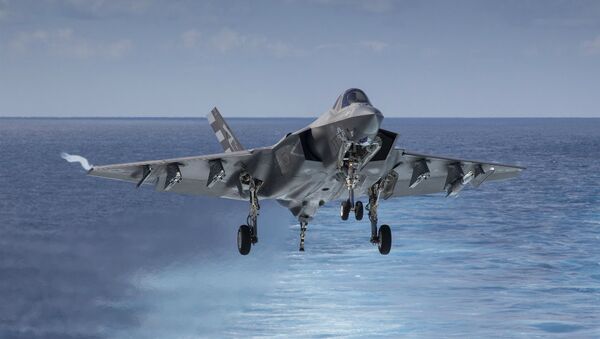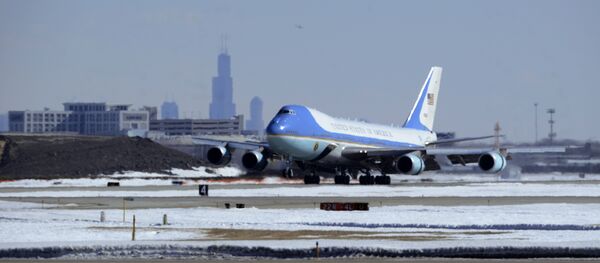Mattis Takes Lead on Cost-Containment Effort
The review will "determine opportunities" to cut F-35 costs "significantly" while "meeting requirements." While many berate Trump for looking into upgrades of the F/A-18 Super Hornet as a comparable alternative to the fifth-generation F-35, Mattis said that the review will investigate to what extent the Boeing-made Super Hornet can provide certain capabilities at reduced levels of military expenditure. The review will look into potential F/A-18 upgrades as well.
Lockheed Martin and Boeing shares were both down Friday as of 1:30 p.m., Eastern Time.
One official from the General Services Administration, which deals with procurement, told Sputnik News that research and development expenses are always factored into the price of an aircraft. The $100-$135 million price tag generally refers to just the production cost of an F-35, and this is usually what gets reported across media outlets, including here on Sputnik. In 2015, lawmakers authorized approximately $55 billion for research, development, and testing, in addition to $1.1 trillion for operations and maintenance.
Lockheed Martin and Trump are "very close to a deal"
Sputnik has reported that despite Trump’s claims to personally oversee “beautiful” cost-cutting measures, the price of the F-35 was already slated to drop in 2017. An executive from one of the anti-missile designers, private UK defense firm Chemring Group Plc, remarked that cost reductions were "a given, regardless of Trump," due to economies of scale.
Officials leaked that the Pentagon and Lockheed would reach an accord on the tenth order of F-35s by the end of January. In a recent earnings call, Lockheed CEO Marillyn Hewson said "President Trump recognizes the F-35 is a very large program—the largest in the Department of Defense," but promised shareholders and investors that lower F-35 costs would not contribute to "slashing our profit."
According to Hewson, the Joint Strike Fighter program is a "growth engine" for the defense mammoth. "We continue to see growing international demand for it," she said.
Norway Will Ditch Old F-16 Fighting Falcon Fleet For F-35 Arrival
Norwegian air squads will decommission a fleet of at least 50 aging F-16 Fighting Falcons to pave way for the arrival of new F-35 Joint Strike Fighters.
Norwegian pilots have been training on F-35s at Luke Air Force Base in Arizona since 2015. This year, the highly-anticipated fifth-generation F-35s will make their debut in Norwegian air space. The Ministry of Defense is hoping that the move to scrap the F-16 squadron will pay off financially and politically. The politics of selling the F-16s to another party may be too complex, and Oslo does not prefer to front expensive maintenance costs to keep the F-16s as a reserve fighting fleet.
The F-16 has been touted as the most combat-proven fourth generation fighter by its manufacturers, General Dynamics and Lockheed Martin. While officials cope with “out of control” costs of the F-35, which Trump hopes to lock-in for less than $100 million per aircraft, it is worth noting that, in the late 1990s, the price of an F-16 hovered between $14-$19 million.
Three F-35s will be delivered to Norway this year, prompting the air force to lay the F-16 fleet to rest, Ministry of Defense officials said. Some F-16s will remain in operation until 2021 as more of the 52 F-35As ordered by Oslo make their way across the Atlantic Ocean.
The Kingdom of Norway, instituted in 1905, has engaged in several armed conflicts since World War II. But Oslo has totaled just 10 casualties during these conflicts, all of which occurred during the War in Afghanistan, in which Oslo has supported US and NATO efforts against the Taliban. Oslo also contributed forces when NATO swooped into the Libyan Civil War.





